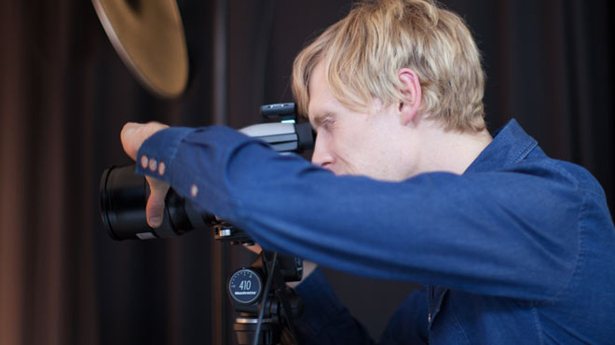INTERVIEW: Mala Sharma on Adobe's move to the Cloud
Next week Adobe will release new 'CC' versions of its Creative Suite tools via its subscription service alone. In this exclusive interview, Mala Sharma, vice president of product marketing for Creative Cloud, explains why.
If anyone is well placed to explain why Adobe has made the decision not to develop its boxed products further and focus exclusively on its Creative Cloud subscription model, it's Mala Sharma - because she's been there from the start. "I've been associated with the idea since its inception," explains the vice president of product marketing for Creative Cloud.
So, we asked her, how exactly did it come about?
Cloud formation

"It was about two years ago that Adobe was having its annual strategic process and I was managing the Creative Suite business," Sharma recalls. "And what I learned was that while each of the individual products were darlings of the customers, what we were hearing more and more is that there were some key creative problems that the Creative Suite was not addressing.
"Graphic designers were being asked by clients to start building websites. Or they'd be asked by clients: 'Hey, I don't just want a magazine, how do I get on the iPad?' Photographers who were looking for new ways of building their business wanted to start dabbling in video because DSLR cameras were starting to shoot video. Web developers were being challenged by responsive web design. Videographers were constantly being pressured because standards were moving so quickly. In other words, all our creative professional customers were struggling with keeping up to date."
From linear working to collaboration
That was one big theme Sharma was hearing from Adobe's customers. Another was that social was taking over their lives. "The way we communicate was now all about social, that what was once a very linear way working was becoming this very collaborative way of engagement." And there's one other piece of specific feedback: customers loved Adobe products, but just couldn't afford to buy them, or to update to the latest version.
The affordability issue

The affordability issue was already being looked into, with a pilot two years previously in Australia having tested the concept of 'pay as you go'. "What we learned," recalls Sharma, "was that not only did we get new customers who couldn't afford it before, but customers who had previously upgraded every three or four years were upgrading faster because they could afford to pay for it."
And thus it was in 2011 that Adobe's response to these issues began to cohere around the concept of moving their software to a subscription service which they called Creative Cloud.
Pay as you go
As Sharma puts it, "it was a recognition of this large transformative trend in the industry, that was being enabled through mobile and social proliferation, a recognition that customers were coming under tremendous pressure from their clients to expand their skillsets, and recognition that people loved our products, but not everybody could afford it."
It was a make or break moment. "We realised we were on the precipice of a massive transformation. Either we could stick with the desktop software and watch the industry evolve down a new path, or we could lead this. And we felt that being a key player in the ecosystem of creativity was our responsibility to help solve the problem for our customers."
Moving to the Cloud

And the next make or break moment came this May at Adobe MAX, when the company announced it would henceforth focusing all its energies on the Creative Cloud. The boxed products of the Creative Suite would still be available to buy, but would not be developed further. The hundreds of new features in the latest 'CC' versions of Photoshop, Illustrator et all – as well as future updates - would only be accessible within the Creative Cloud.
It's a bold move, but the company is absolutely committed to this new direction, says Sharma. "That's why this is so exciting. We recognise this is a multi-year plan and we need to start the journey in steps and build on it."
"What you saw us announce last year was step number one, which is: how do we make it just really simple to get the software? I don't know if you've downloaded software in the past but it used to be a pain. So we created the Adobe application manager which meant with one click you could have all your applications open to you. That was step one.
Daily design news, reviews, how-tos and more, as picked by the editors.
Sync features
"Step two was us saying: it's not just about having the application, it's about creating those files and being able to access them to you from everywhere. So that's when sync came into play."
This means you can do things like work on one document across several devices, including tablets, syncing everything including fonts, settings and colours. Clients can access files sat on your desktop via the web and comment on them – no need to send large files by email. Plus there's in-built version control, to avoid all that confusion over whether your latest version is named 'final.final.psd' or 'final.final.final.psd'.
Community features
"The third step was the aquisition of Behance," adds Sharma. "We recognised that creatives don't like to work in silos, they like to be part of a community." This means, for example, that: "When I'm in Photoshop creating a piece of art, right there I can post it to Behance, I get that immediate feedback, and I can either publish it or save it."
"MAX was the bringing together of these three worlds into what we unveiled, which was this frictionless and very connected workflow."
An expanded solution

It's a big change in mindset, of course, and Sharma is still asked "Why can't you let people just buy the new versions of your products as boxed software?" Her answer is that the desktop software itself is now only part of the service - and is in itself limited in its ability to solve many of today's designers' problems.
"The very premise of Creative Cloud is really the bringing together of these apps, with the ability to sync not only the files but the colours, your fonts, your settings, so you can be more efficient when you move from one desktop to another and access them on your tablet devices. It's about collaborating with your team. It's about bringing in your community. It's about all these things and more."
Value offering
"This is a completely expanded solution," she continues. "It's solving a much bigger problem for our customers. While the desktop tools are fantastic - and hundreds of new features are being added to the CC versions - it's all of these aspects, and connecting them together in a logical way for our customers, that really makes the difference."
Finally, she adds, it's also about value. "You have access to $25,000 worth of fonts through Typekit. You get free membership of Behance Pro Site which is $100 a year. You have storage, which of course needs to be part of the solution, and so on."
Platform for innovation

One further thought that Sharma is keen to stress about the Creative Cloud can be summarized: you ain't seen nothing yet. "Now that the platform is in place," she says, "it's just going to be innovation going forward."
"In the last 12 months, we've had a feature release every week. And going forward that's what our customers should expect. We certainly expect to delight our customers every week, every month. Because that's what Creative Cloud is, it is a platform for innovation."
Problem solving
Quite what those improvements and new features will be, she admits, nobody knows yet – they will depend entirely on how customers use the service and the problems they may encounter.
"Engineers love to solve problems," she reasons, "and as soon as they've solved the problem they want to present it to the customer. So that's definitely part of the proposition: that as we innovate - like any software as a service company - we want to be able to provide that to customers."
Customer fears
One fear that's expressed by many Creative Bloq readers is that once Adobe has you tied into the Creative Cloud, they may hike the price and hold your files to ransom. Sharma dismisses the notion.
Just as you can share CC files with colleagues and clients who don't have the software, The Creative Cloud allows you to export your files into your existing CS6 tool, she explains. "So you're perfectly at liberty to leave the service at any time and still retain your work."
Specifically, if you cancel your paid membership you will still have access to the free level of membership, which provides 2GB of storage. You will have a 90-day grace period to download your files to your local machine, and delete online files to get your cloud storage down to 2GB, or to purchase additional storage separately if you choose. If you leave more than 2GB of files in your cloud storage for more than 90 days, you may lose access to some or all of your files.
Rather than having power over the customer base, then, Sharma believes the role will be reversed, with the pressure on Adobe to keep them sweet. "We have to think in terms of 'gifts' to customers," she maintains. "Every month people will think: 'Am I getting enough value from Adobe?' And we have to deliver on delighting them."
"I think of the Creative Cloud as a place that brings everything a creative professional needs to be creative," she concludes. "It's about removing all the friction. Change is always hard, but we've never run away from engaging with our customers and helping them see what the path forward is."

The Creative Bloq team is made up of a group of art and design enthusiasts, and has changed and evolved since Creative Bloq began back in 2012. The current website team consists of eight full-time members of staff: Editor Georgia Coggan, Deputy Editor Rosie Hilder, Ecommerce Editor Beren Neale, Senior News Editor Daniel Piper, Editor, Digital Art and 3D Ian Dean, Tech Reviews Editor Erlingur Einarsson, Ecommerce Writer Beth Nicholls and Staff Writer Natalie Fear, as well as a roster of freelancers from around the world. The ImagineFX magazine team also pitch in, ensuring that content from leading digital art publication ImagineFX is represented on Creative Bloq.
